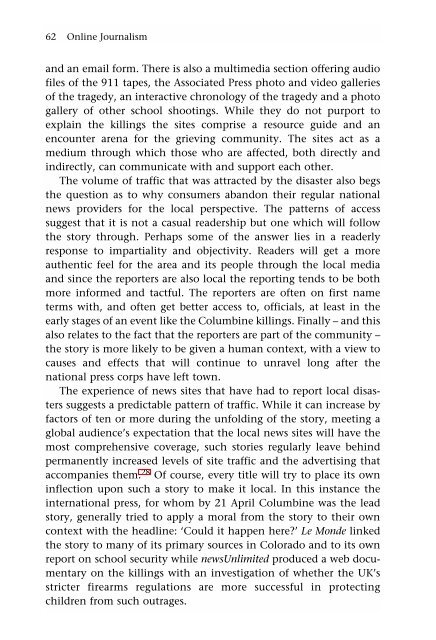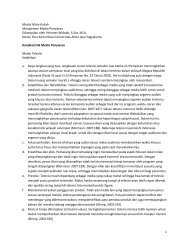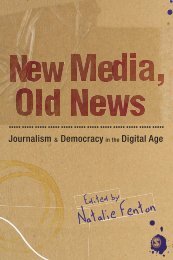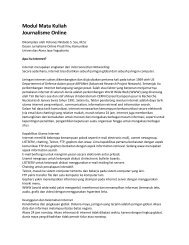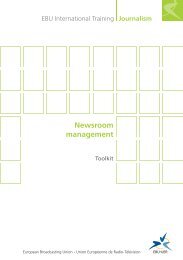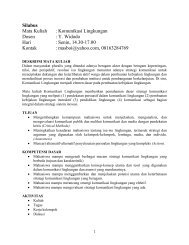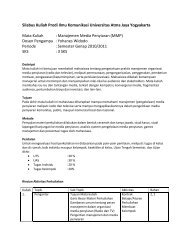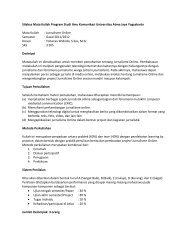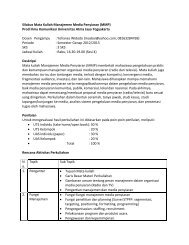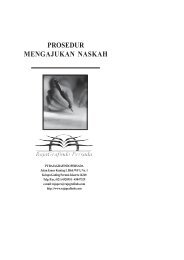Online Journalism - Ayo Menulis FISIP UAJY
Online Journalism - Ayo Menulis FISIP UAJY
Online Journalism - Ayo Menulis FISIP UAJY
You also want an ePaper? Increase the reach of your titles
YUMPU automatically turns print PDFs into web optimized ePapers that Google loves.
62 <strong>Online</strong> <strong>Journalism</strong><br />
and an email form. There is also a multimedia section offering audio<br />
files of the 911 tapes, the Associated Press photo and video galleries<br />
of the tragedy, an interactive chronology of the tragedy and a photo<br />
gallery of other school shootings. While they do not purport to<br />
explain the killings the sites comprise a resource guide and an<br />
encounter arena for the grieving community. The sites act as a<br />
medium through which those who are affected, both directly and<br />
indirectly, can communicate with and support each other.<br />
The volume of traffic that was attracted by the disaster also begs<br />
the question as to why consumers abandon their regular national<br />
news providers for the local perspective. The patterns of access<br />
suggest that it is not a casual readership but one which will follow<br />
the story through. Perhaps some of the answer lies in a readerly<br />
response to impartiality and objectivity. Readers will get a more<br />
authentic feel for the area and its people through the local media<br />
and since the reporters are also local the reporting tends to be both<br />
more informed and tactful. The reporters are often on first name<br />
terms with, and often get better access to, officials, at least in the<br />
early stages of an event like the Columbine killings. Finally – and this<br />
also relates to the fact that the reporters are part of the community –<br />
the story is more likely to be given a human context, with a view to<br />
causes and effects that will continue to unravel long after the<br />
national press corps have left town.<br />
The experience of news sites that have had to report local disasters<br />
suggests a predictable pattern of traffic. While it can increase by<br />
factors of ten or more during the unfolding of the story, meeting a<br />
global audience’s expectation that the local news sites will have the<br />
most comprehensive coverage, such stories regularly leave behind<br />
permanently increased levels of site traffic and the advertising that<br />
accompanies them. 28 Of course, every title will try to place its own<br />
inflection upon such a story to make it local. In this instance the<br />
international press, for whom by 21 April Columbine was the lead<br />
story, generally tried to apply a moral from the story to their own<br />
context with the headline: ‘Could it happen here?’ Le Monde linked<br />
the story to many of its primary sources in Colorado and to its own<br />
report on school security while newsUnlimited produced a web documentary<br />
on the killings with an investigation of whether the UK’s<br />
stricter firearms regulations are more successful in protecting<br />
children from such outrages.


